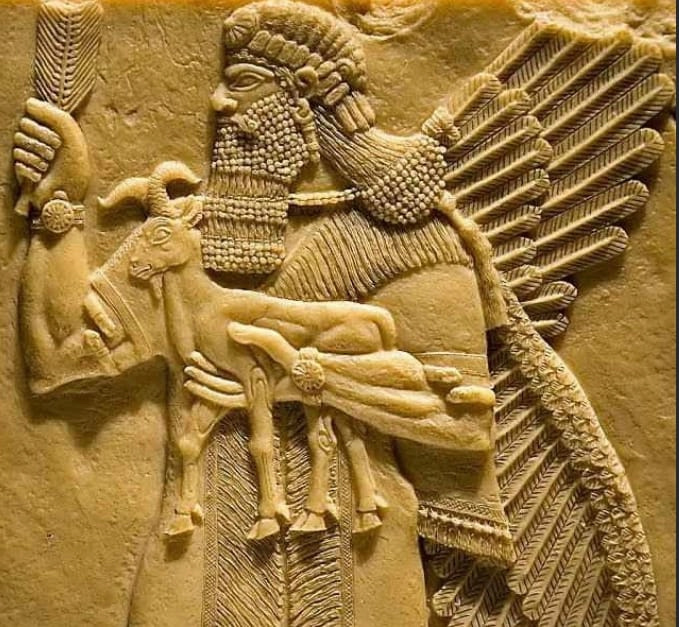Restoration work by King Ashurbanipal

Within this framework, the royal palace in Nineveh, especially the room bearing the number, contained important wall drawings that were part of the restoration work carried out by King Ashurbanipal around the year 650 BC (restoration of Sennacherib’s palace). This king also rebuilt What is known as the “Taj of the Emir’s Palace,” which is also known as the Northern Palace. The royal room that leads outside the palace was lined with a group of relief sculptures, including a scene of a procession of lions being chased by rooms R, A, pet lions, room E, and lions being chased by King Room C, Lions, Deer and Wild Horses Room S,
Many of these frescoes have fallen into some of the corridors from the upper floor, and alongside these drawings there are clear scenes of hunting expeditions and lunch sessions in the garden for members of the royal family.
Basically, the inspection tablets in “Nineveh” were found in four buildings in the northwestern location and the northern location in the area of the goddess “Ishtar” and the area of the temple of the god “Nebo.” The tablets found in the northwestern side were the ones that represented the library, but the tablets that It was found in the western side
At the time of Ashurbanipal's rule, the Neo-Assyrian Empire was the largest empire the world had ever seen. Ashurbanipal was the grandson of Sennacherib, and the son of Esarhaddon, whom he chose as heir in 672 BC even though he was not the eldest son. Ashurbanipal ascended to the throne in 669 BC jointly with his older brother Shamash-shum-ukin, who became king of Babylon. He spent much of the early years of his reign fighting rebellions in Egypt, which his father had conquered.
Ashurbanipal's greatest campaigns were those directed against Elam, Assyria's old enemy, and against his brother Shamash-shum-ukin, who expected to be Ashurbanipal's equal and began to resent the arrogant control his younger brother held over him. Elam was defeated in a series of campaigns led by Ashurbanipal in 665 BC and 647-646 BC. After that, the cities of Elam were destroyed and its people were slaughtered, and the land remained barren and without protection. Then Shamash-shum-ukin rebelled in the year 652 BC and formed an alliance of Assyria’s enemies to fight alongside him against Ashurbanipal, but he was defeated by Ashurbanipal. After that, his rule extended for 37 years and his fame as a conqueror and king was so long that he was known as the “King of the World.” He raised Assyria to the height of greatness that had never been known before. He was committed to its history, but he was famous, in particular, for his interest in and encouragement of peaceful achievements. He built a magnificent palace in Nineveh, some of whose interior walls were decorated with beautiful relief carvings and magnificent statues. He founded schools, paved and paved roads, and constructed public buildings.
Source: websites

